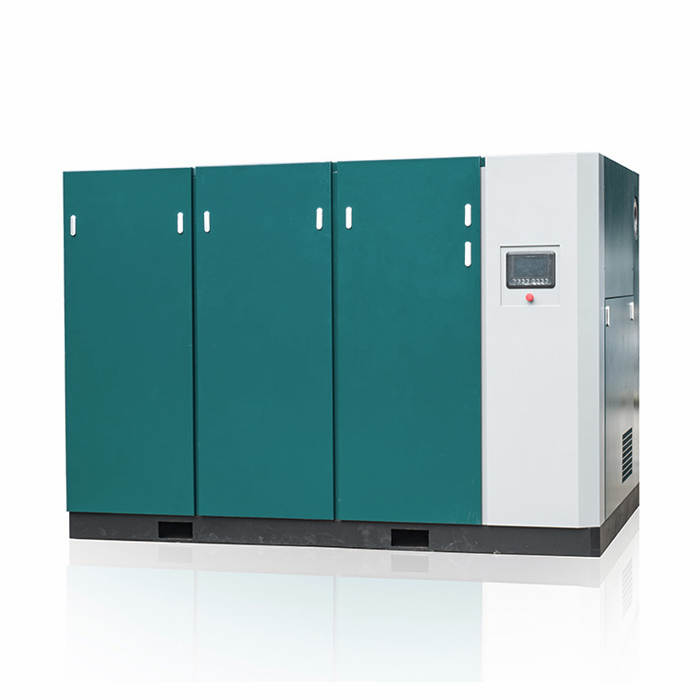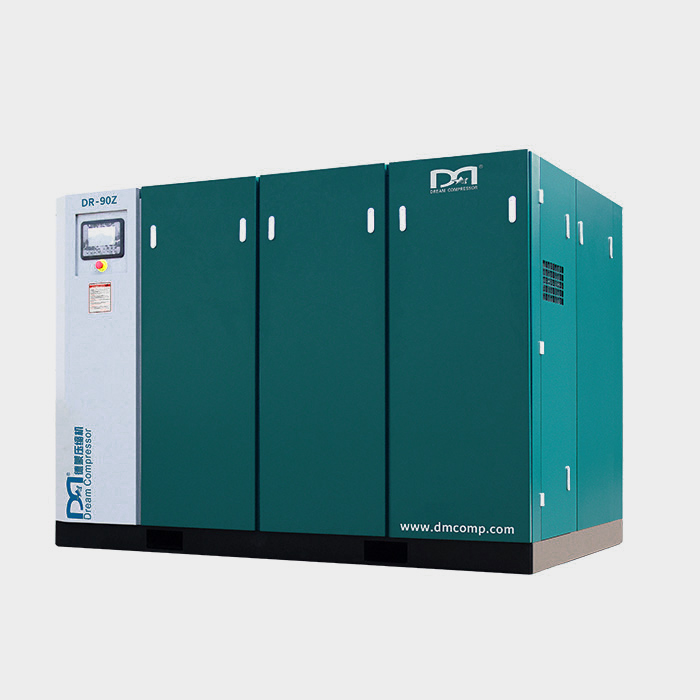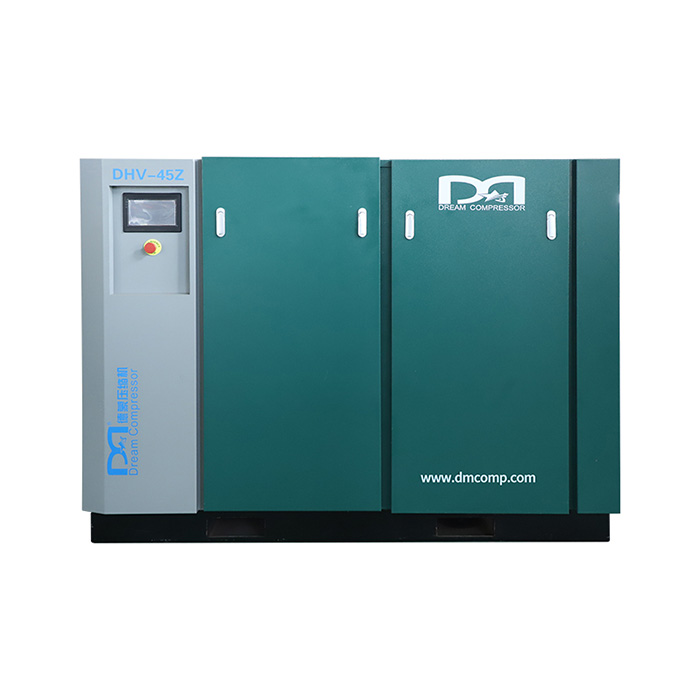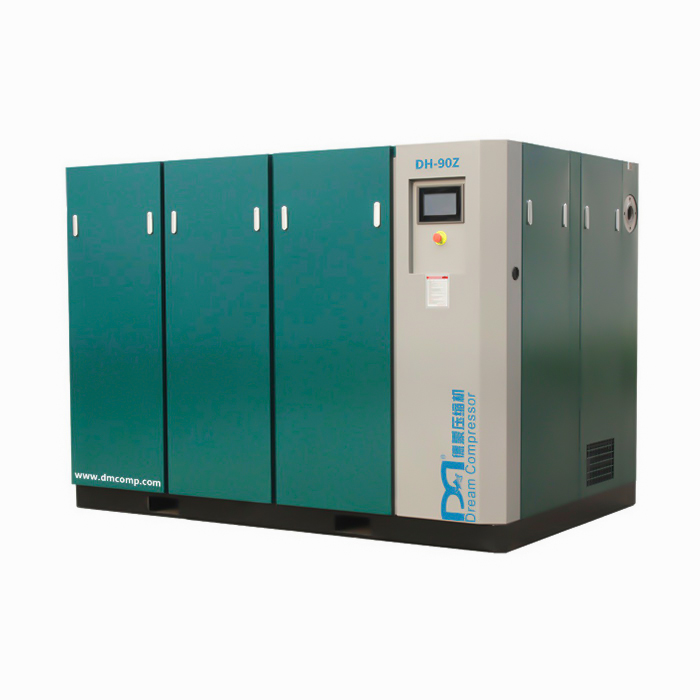Commonly referred to as compressor tripping refers to the shutdown of the compressor caused by the disconnection of the compressor overload protector. Generally, the recovery time after the overload protector is tripped is longer, and the compressor cannot be used normally at this time. There are many reasons for the jumper. The most common one is a high-temperature jumper, especially in the summer when the temperature is higher. However, there are other uncommon reasons that make maintenance difficult. Unfamiliar after-sales maintenance personnel will feel more "tricky" when encountering such problems. Through this article, you can adopt a "removal method" to eliminate the cause of the failure.
1. Start with pressure
On-site inspection of the mechanical pressure gauge on the oil and gas barrel of the compressor, if the pressure gauge shows pressure, it is preliminarily determined that the system may not be fully decompressed, causing the compressor to start under pressure, resulting in excessively high starting current and triggering the air switch to trip to protect the unit. Because in screw air compressors, there is often a phenomenon that there is still pressure in the system after the compressor stops due to the failure of the minimum pressure valve or the blockage of the pressure relief system.
There are generally two possibilities when the pressure gauge shows pressure: one is that there is pressure in the system; the other is that the pressure gauge is damaged and cannot be returned to zero normally. The method of judgment is to open the device or valve that can relieve the pressure in the system. When the pressure gauge in the oil and gas barrel is found to show that there is still pressure after the pressure relief valve is opened, it is judged that the system has no pressure, which is caused by the pressure gauge being unable to return to zero; The system is under pressure.
2. The head resistance is too large
Excessive head resistance will cause the compressor start current to be too large, that is, the compressor is overloaded, causing the air switch to trip. The role of lubricating oil in the screw compressor is very important. Its role is mainly manifested in four aspects: cooling, lubrication, sealing, noise reduction, and the quality of the oil and the amount of oil directly affect the normal performance of the compressor The operation and the service life of the compressor, especially the head part of the compressor, have the most obvious impact. There are three main situations that cause the head resistance to increase:
(1) The lubricating oil has a high viscosity. The temperature in the southern region varies greatly with the seasons. The ambient temperature in summer can be as high as about 40 ℃, and the minimum temperature in winter is as low as below zero. According to the characteristics of general lubricating oil's viscosity inversely proportional to temperature, the viscosity of lubricating oil is significantly higher than before. Graphs of viscosity and temperature characteristics of several types of lubricating oils are commonly used.
(2) Coking of the screw and star wheel in the nose (single screw compressor). The work of the screw compressor is mainly completed by the meshing of the screw and the star wheel. The size of the gap between the screw and the star wheel determines the work efficiency of the compressor. If the gap is too large, part of the gas will leak from the gap, and the compressor will have low efficiency; if the gap is too small, the resistance between the star wheel and the screw will be large, the load will be large, and the motor will consume a lot of energy. Coking in the nose can cause the gap between the star wheel and the screw to decrease, the frictional resistance in meshing is large, and the current of the compressor increases. The double screw is the same.
(3) The amount of lubricating oil in the machine head is too much. The oil cut-off valve at the outlet of the machine head failed. After the compressor was stopped, the oil cut-off valve was not closed in time, and a large amount of lubricating oil was pressed into the machine head, which caused the starting resistance to be too large during the start-up process, and the increased current caused the overload protection to trip.
The processing methods are:
(1) Manual cranking is the most basic detection method for the connection and free rotation of compressor power components, transmission components and linkage components. Manually crank the compressor to check whether the head and motor can rotate freely, and determine whether the resistance to rotation increases or not based on the previous crank experience. When the ambient temperature is low (the current ambient temperature can be judged from the exhaust port temperature displayed by the unit), the resistance may be caused by a decrease in temperature and an increase in oil viscosity. As the viscosity of the lubricating oil in the machine head increases, the starting current of the motor becomes larger, and the starting time of the compressor is prolonged. The motor start time on the air switch can be slightly extended while ensuring safety (excessive extension may cause a higher level of air switch to trip, thereby affecting other electrical equipment) to meet the increase in oil viscosity The compressor start time is prolonged to ensure the normal start of the compressor.
(2) Oil coking in the machine head is a common phenomenon in screw compressors when the oil quality is poor or the temperature is high. Due to the coking of the machine head, the gap between the screw and the star wheel becomes smaller, and friction occurs during rotation. The resistance increases, the load of the unit increases, and the current increases. In severe cases, the screw and the star wheel are glued together by an oil coke, and the unit cannot rotate freely.
(3) The function of the oil cut-off valve on the oil injection pipe of the machine head is to cut off the oil injection pipe in time when the unit is stopped to prevent a large amount of lubricating oil from being pressed into the machine head due to the residual pressure in the oil and gas barrels, causing excessive lubricating oil in the machine head. many. Therefore, too much lubricating oil in the machine head after shutdown is also one of the reasons for the large starting current of the compressor. The most direct way to solve the problem of excessive lubricating oil in the machine head is to open the end cover of the machine head, release part of the lubricating oil in the machine head, and repair or replace the oil cut-off valve at the same time.
3. Electrical device failure
Many users use a 380V low-voltage motor, which uses the star-delta conversion step-down start mode to start. The star mode is used in the early stage. When the compressor is started for 10 seconds, it turns to the delta mode. If the star-delta switch fails, the normal star-delta conversion cannot be performed, which will cause the compressor to trip 10s after starting. In addition, when the air switch is in use due to vibration and other reasons, the set start time may be shortened, which may also cause instantaneous tripping.
The most direct and effective way to determine whether it is an electrical fault or a mechanical fault is to separate the motor from the machine head, that is, to remove the coupling/belt. The compressor control system is equipped with a protection device. If the protection device is not separated and the compressor is started, the motor will run immediately. The control panel will display a motor current of about 40A. After running for 10 seconds, it will display an abnormal current and the motor will automatically stop running. , Because when the current is detected to be greater than 10% of the maximum current or less than 90% of the minimum current, the protection unit will automatically shut down, so that it will not be possible to judge the cause of the unit's failure. After the protection is thrown off, the motor will run continuously if it is mechanically caused; otherwise, the same tripping phenomenon will occur.
In addition, the characteristics of high-temperature tripping caused by failures of the air cooler, water cooler, and three filters are more obvious, so I will not repeat them. In short, there are many reasons for compressor tripping, and there are many causes. Only when we have a more comprehensive understanding of compressor operating principles and component functions, can we prevent compressor tripping failures before they occur.









